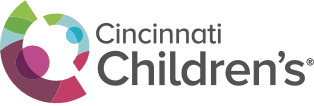Successful Drug Treatment Leads to Healthy Turnaround for Patient with LCH
Robinson Family Traveled 500 Miles so Johnny Could Receive Care from Ashish Kumar and Our Histiocytosis Center
Three-month-old Johnny Robinson was very sick when he first came to Cincinnati Children’s from his home in Virginia.
“He just seemed to be in so much pain and discomfort when we were in Richmond,” said his dad, Peter. “He wasn’t sleeping. He wasn’t eating. He could barely cry he was so weak. They had him on morphine he was so uncomfortable.”
Two weeks later, his health dramatically improved. Johnny, who was born with Langerhans cell histiocytosis (LCH) and was in pain most of the time, had improved so much during his stay at Cincinnati Children’s that the family would be sent home the next day.
“It was shocking, the turnaround,” said Peter. “Just two weeks later and he’s looking like a normal kid again – just smaller than he should be. It was astounding.”
An astounding outcome for the family, but not surprising to Johnny’s doctor, Ashish Kumar, MD, PhD, co-director of the Histiocytosis Center. In 2016 he first began using a new drug therapy to treat two patients who were not responding to traditional chemotherapy – the most common form of treatment for patients with LCH.
Both patients made a full recovery using the novel therapy, which involves an oral drug (trametinib) traditionally used to treat melanoma. Years later, Kumar and his team have seen a 100% success rate in treating over 40 current LCH patients with this therapy, including Johnny.
LCH is a rare, cancer-like condition that oftentimes affects a child’s skin and bones. When a person’s body makes too many immature Langerhans cells they can form tumors or damage tissue, bone and organs.



